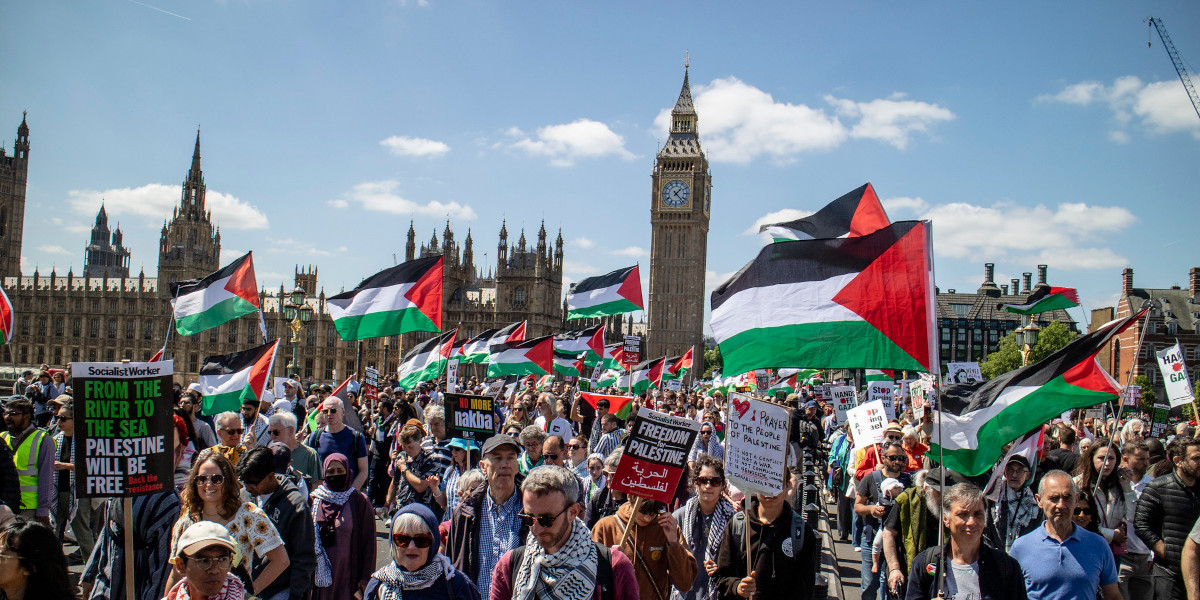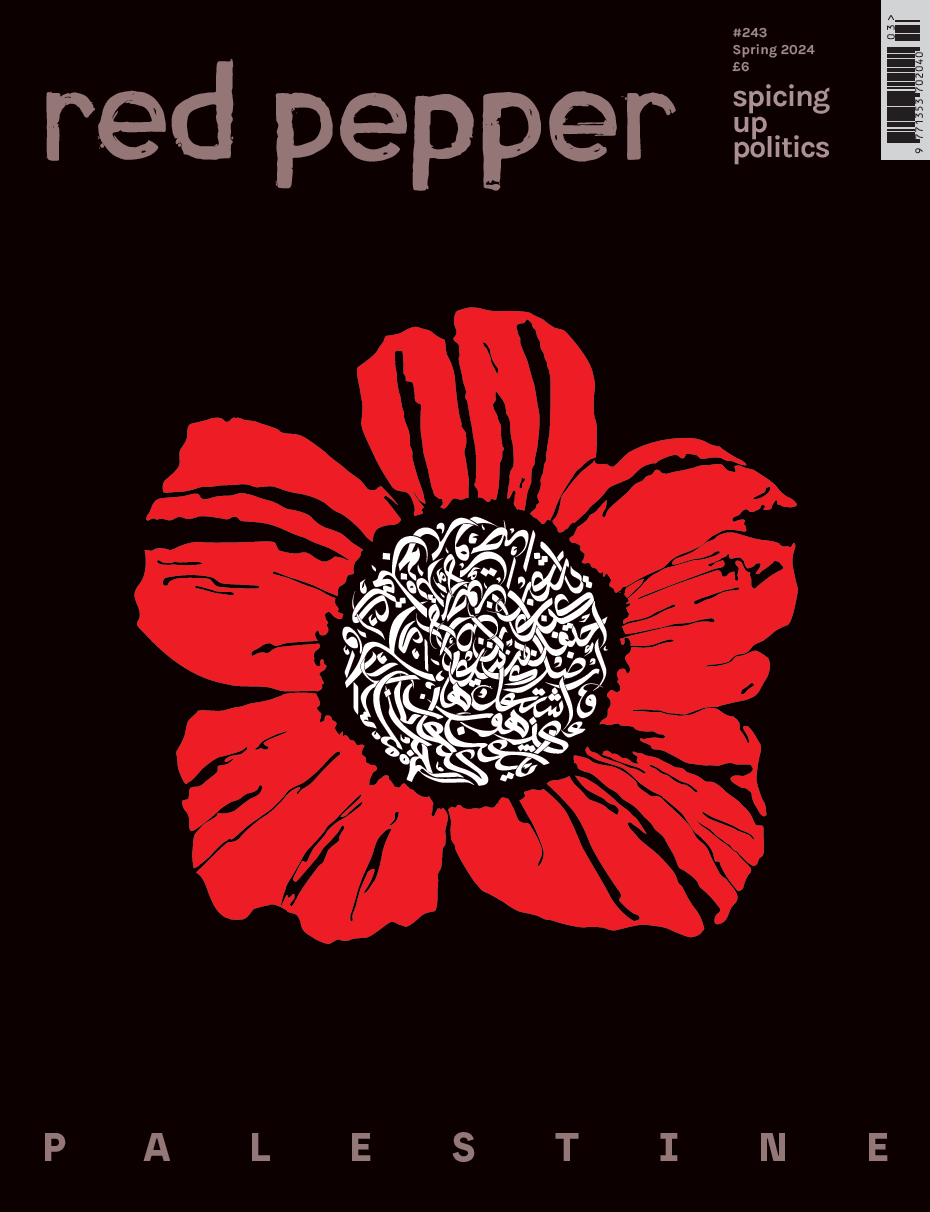Nakba means Catastrophe – the word Palestinians use to describe the events of 1948 when paramilitary Zionist organisations unleashed Plan Dalit (Plan D) – one of a series of operations designed to drive them from their homes. It is now frequently used to describe the continuing denial of the rights of the Palestinian people to self-determination, through occupation, repression and now genocide.
Driven from their lands
In 1948, 700,000-850,000 Palestinians, around three quarters of the population, were driven from their lands, terrified by a succession of atrocities and massacres. The Haganah (the main Zionist paramilitary organisation) onslaught began before 15 May, the date the United Nations set to impose the partition of Palestine dividing the land into notional ‘Jewish’ and ‘Arab’ states. On 1 January 1948, 60 men, women and children were killed in Balad al Sheik; on 9 April, 110 villagers at Deir Yassin, half of whom were women and children, herded into a corner and slaughtered. Following the Israeli declaration of independence on 14 May the Israeli Defence Force (IDF) continued their aggression. On 9 July, 200 were killed in Lydda; 29 October, 50-70 in Safsaf; 30 October more than 60 killed in Saliha. Estimates of the number of such incidents varies but documented evidence exists of at least 70 such massacres across Palestine.
Many, fleeing these scenes, died on forced marches. Documented evidence exists of cases of rape and acts of sexual violence occurring during these times. The Israeli historian Benny Morris interviewed in 2004 said that since neither the victim nor the rapist would like to be identified the cases that were known about were likely to be ‘just the tip of the iceberg’.
Houses were looted. At one point,1,800 trucks took away the possessions of those who had fled. By the end of 1948, more than 400 villages were depopulated; some completely erased. Homes, properties, shops, businesses were stolen. That is why the key is the symbol of the Palestinian demand of the right of return for all.
The military disparity
The Palestinians were defenceless. The asymmetry between the parties was evident in the disparity of forces and arms. On the Zionist side, the armed forces composed of the Haganah, Notrim (the Jewish police force), and others numbered in excess of 70,000. Additionally, there were terrorist groups like the Irgun and the Stern Gang, kidnapping, murdering and acting with impunity under the protection of the Haganah.
However, the scene was set between 1936 and 1939 when the British repressed the Palestinian Thawra (revolutionary uprising). The Thawra began with a general strike from April to October 1936 that paralysed the country and forced the British to deploy a quarter of the non-Indian British army to suppress the movement.
The relatively poorly equipped Palestinian irregular forces were unable to match the imperialist machine in numbers or arms. Their struggle was sustained by localised National Committees established across Palestine. According to Ghassan Kanafani, the Thawra was defeated by three forces: the British, the Zionists and an equivocating Palestinian leadership which buckled in the face of the repression. The focus of the Palestinians however was clear. Echoing comments from the 1920 Palin Commission and the Haycroft Report of 1921, the 1937 Peel Commission made it clear that the Thawra was ‘an open rebellion of the Palestinian Arabs, against British Mandatory Rule’.
Estimates of Palestinian casualties vary. The historian Matthew Hughes who has written extensively on British actions during the Thawra has estimated that the numbers of Palestinians killed is likely to have been between 5,748 and 7,272, while Walid Khalidi suggests there were some 19,792 victims in total. The British hung 108 Palestinians and more deaths occurred as a consequence of internal struggles provoked by the uprising against the British.
Britain’s involvement
The British trained members of the Haganah in joint operations. One such group, known as the Special Night Squad, was led by Captain Orde Wingate, an ardent Christian Zionist. The squads he trained were known for their brutality – summary executions, wanton destruction of homes and villages, violent torture, the use of human shields and numerous barbaric practices. Wingate’s actions even repulsed sections of the British army.
Of course, this ferocity can be traced back through Britain’s imperialist history in India, South Africa and including the behaviour of the Black and Tans in the Irish War of Independence. Beginning in 1922, thousands of Black and Tans were recruited to serve in Palestine as an auxiliary to the British Mandate police and the army. There is a lineage of such behaviour running through British imperialism’s history.
Following the Thawra, the British systematically disarmed the Palestinian people seizing all rifles and guns that were held. Simultaneously the Zionist organisations took an inventory of the land and the centres of resistance that emerged in the revolution. The balance of forces after the uprising was one sided and became emphatically so after the Second World War with the organised paramilitary Zionist forces, like the Palmach, and irregular terrorist groups such as the Irgun and the Lehi (Stern) gang numbering some 112,119.
At the same time the Palestinians who remained a majority in the country with 67% of the population in 1947 had just a handful of rifles. In contrast, the Haganah were able to purchase weapons from countries such as Belgium, USA, France, Canada and Britain. After 1948 a major source of arms and warplanes, including Spitfires and Messerschmitts, was bought from Czechoslovakia and transported via Yugoslavia. This was undoubtedly authorised by the Soviet Union which saw the anti-British actions of the Zionists as foreshadowing a potential ally for Moscow in the region – a view abandoned in the early 1950s.
Still complicit
The UK government, alongside France and Canada, has expressed opposition to the expansion of Israel’s military operations in Gaza and called on the Netanyahu regime to immediately allow humanitarian aid to enter the area. But this is not enough, since Britain is continuing to provide arms to the Israeli military via Elbit, BAE systems and others, which are being used to kill Palestinians.
In 2023 the Tory government signed the ‘2030 the UK-Israel Roadmap’. It proposes a comprehensive programme of cooperation between the two countries in 12 different fields through a comprehensive programme of cooperation in Defence, Trade, Health, Education, Culture, Science, Technology, and other fields. The Labour government should repudiate this policy and end all arms trade and support for a government whose leader stands arraigned before the International Court of Justice and the International Criminal Court.
Despite the scale of the challenge that they face and the strengths of their adversaries the Palestinian people continue to resist and show Sumud (steadfastness) to demonstrate their determination to remain on their land. What we are witnessing in Palestine is also a war for hegemony in the Arab world. An independent Palestine would undoubtedly be a challenge to the hereditary oligarchs who dominate the region. A defeat for Trump’s initiated Abraham Accords might suggest the possibility of another Arab Spring. The stakes are high – vast reserves of oil and gas exist in the region. Nothing less than an immediate and unconditional ceasefire is needed, and the Labour government needs to end its complicity with the genocide that is happening.










